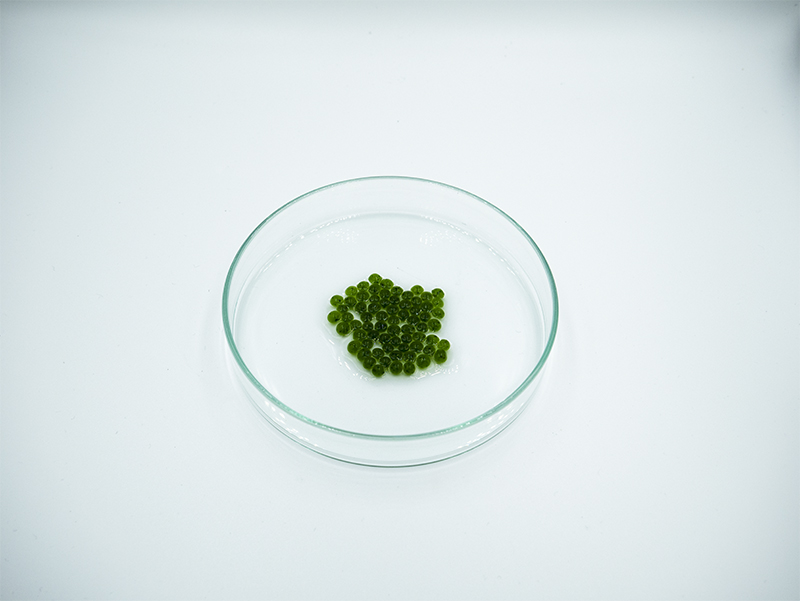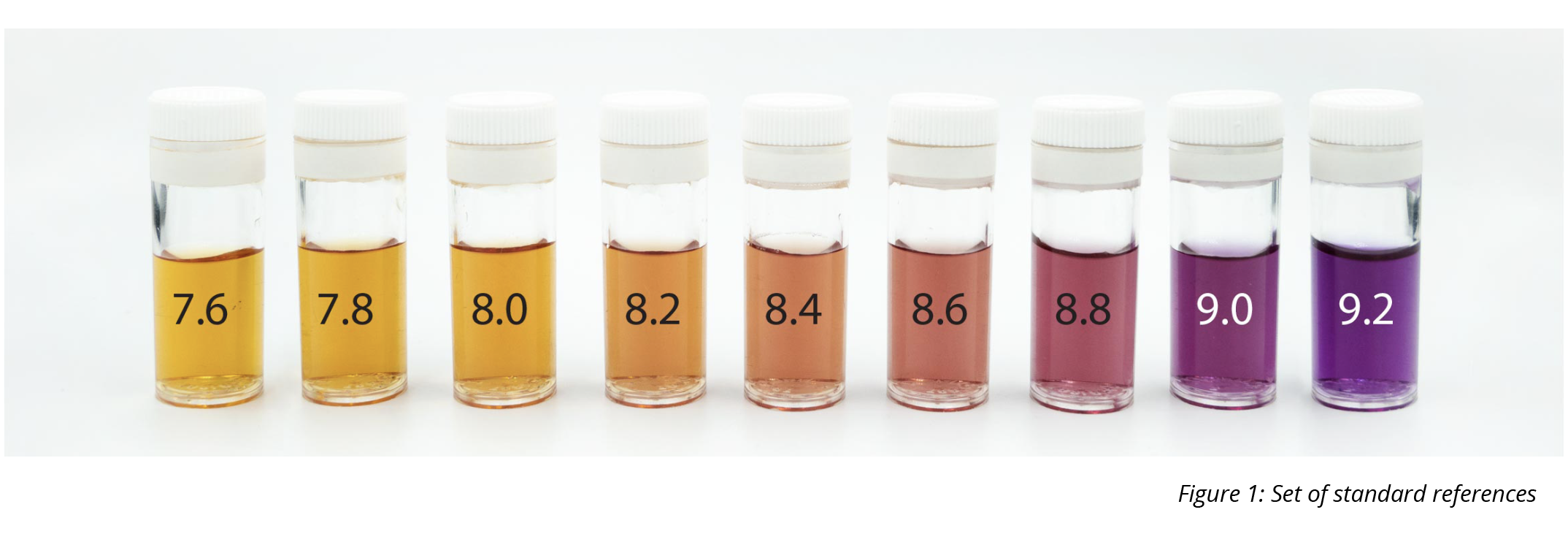Algal Ball Photosynthesis

AUSTRALIAN CURRICULUM ALIGNMENT:
-
In eukaryotic cells, specialised organelles facilitate biochemical processes of photosynthesis, cellular respiration, the synthesis of complex molecules (including carbohydrates, proteins, lipids and other biomacromolecules), and the removal of cellular products and wastes (ACSBL049)
- Cells require inputs of suitable forms of energy, including light energy or chemical energy in complex molecules, and matter, including gases, simple nutrients, ions, and removal of wastes, to survive (ACSBL044)
- The cell membrane separates the cell from its surroundings and controls the exchange of materials, including gases, nutrients and wastes, between the cell and its environment (ACSBL045)
- Photosynthesis is a biochemical process that in plant cells occurs in the chloroplast and that uses light energy to synthesise organic compounds; the overall process can be represented as a balanced chemical equation (ACSBL052)
BACKGROUND:
During photosynthesis, radiant energy is converted into organic substances that can be stored within the plant to support growth, reproduction, and metabolism. Plants metabolise the sugars that form as a result of sunlight, Carbon Dioxide, and water reacting. Reliably studying photosynthesis first hand can be difficult and require precise setting up. The algal ball photosynthesis kit offers an easier, more accurate method of studying photosynthesis that is perfect for use within the classroom.
In this practical, students place algal balls into small vials and add Hydrogen Carbonate Indicator solution. When exposed to light, the encapsulated algae absorb CO2 as photosynthesis takes place. As a result of the lowered CO2 levels, the pH of the solution rises, causing the colour of the Hydrogen Carbonate Indicator solution to begin turning purple. When no light is available, respiration dominates and the pH decreases through the release of CO2, causing the solution to be yellow/ orange. Students have the opportunity to tangibly observe photosynthesis. They are tasked with conducting a number of small experiments and observing how the colour changes, indicating a change in the pH level. Students observe the changes that occur when the algal balls are stored in a dark environment for a short period. They are tasked with determining whether varying the number of algal balls has any impact on the rate of change in pH levels, and figuring out the ideal level of light intensity for the algal balls to perform photosynthesis.
These experiments are the perfect introduction into photosynthesis, but it can take some time for noticeable changes within the pH of the solution to occur. As algae is a living organism, the amount of time can vary quite a bit. These experiments should be paired with a theorical lesson into photosynthesis. Get students to set up the first experiment at the start of a lesson, then spend some time exploring the concept of photosynthesis, before observing the results and beginning the second experiment. If you are short for time, you may like to conduct the second experiment in the next lesson on another day.
PREPARATION- LAB TECHNICIAN
Algal Ball Culture Care
- The algal balls will arrive stored in a container of distilled water. Remove the algal ball container from its packaging as soon as it arrives and loosen the lid to allow for airflow.
- The Chlorella within the balls is alive and therefore needs light to stay active. We recommend that you leave the balls in the container that they arrive in, and that you place this vial in a well lit area until required. Do not place in direct sunlight, nor expose to hot light sources, as the heat will be detrimental.
- We recommend using the algal balls as early as you can; otherwise, they are best used within 2 weeks.
- If you wish to make your own algal balls, visit our helpful ‘How to make Algal Balls’ resource on our website.
General Preparation
-
Rinse the vials for your experiment using hydrogen carbonate indicator solution. To do this, add approximately 1mL of hydrogen carbonate indicator solution to a vial, replace the cap on the vial and shake. This ensures the vials are clean.
- Next, pour the rinse liquid into the second vial and repeat until you have rinsed all required vials. Discard the rinse liquid from the last vial.
- You will need to provide each student with a vial containing at least 60 algal balls. You will also need an additional 12 algal balls for experiment 1 (see Step 5).
- If using a 500pk of algal balls, you will need to divide them to create 8 sets of 60 algal balls (with some left over). To divide the algal balls, we recommend pouring them into a strainer over a beaker. You can then use a spoon (or similar device) to pick them up and place them into smaller vials. Then equally divide the surrounding liquid (captured by the beaker) into each of the vials. Do not let the algal balls become dry; they must be stored in liquid.
- For Experiment 1, add 12 algal balls to a small 7mL vial and add approximately 3mL of hydrogen carbonate indicator. You will need to expose this vial to light at least 1 hour ahead of class time. For best results, you may like to leave the vial in front of a light source, such as a lamp 24 hours in advance. Remember not to expose the balls to too much heat; do not leave out in the sun for extended periods of time. The vial should be exposed to light long enough for it to turn purple or near purple on the colour spectrum.
METHOD-STUDENT ACTIVITY
Experiment 1: Exposure to light and dark
-
This experiment is a teacher demonstration. Your teacher will show you a vial of algal balls that has been exposed to light. Observe the colour of the liquid surrounding the balls. Using the set of pH standard solutions, record the pH level in the solution. You can use the image below (Figure 1) as a guide if standards are not available, however comparing the colour of the liquid in your vials to actual pH standard solutions will provide the most accurate results.
- Your teacher will place the vial in a dark cupboard or drawer until just before the start of the class. Make your predictions about what will happen and what colour the surrounding liquid will be at the end of class time.
- At the end of class, your teacher will retrieve the vial. Observe the colour and determine whether your predictions were correct. Using the set of pH standard solutions, record the pH level in the solution.
Experiment 2: Varying the number of algal balls per vial
- You will need to prepare 5 vials with varying numbers of algal balls and Hydrogen Carbonate Indicator (e.g., 3, 6, 9, 12, 15) . To do this, separate the algal balls from the surrounding liquid using the strainer. Pour the algal balls into a strainer over a small beaker then use a spoon to place the correct number of balls into each vial. Straining the balls is not necessary, but it does make it easier to collect them. Add approximately 2mL of Hydrogen Carbonate Indicator to each vial.
- Place each vial the same distance from a light source, record the current colour/pH of the liquid and make your predictions.
- After approximately 40 minutes, collect the vials and observe any colour changes. Using the set of pH standard solutions (Figure 1), record the pH level in the solution.
- Pour the algal balls back into the strainer, to be used for the next experiment.
Experiment 3: Varying the light intensity
- Prepare 5 vials of 12 algal balls with 2mL of Hydrogen Carbonate Indicator. Record the starting colour/ pH.
- Place the vials at varying measured distances from a light source. Record the exact distances with a ruler or tape measure. Ensure no vial casts a shadow on any other, and make your predictions on what will happen.
- After approximately 40 minutes, collect the vials and observe any colour changes. Record the pH level in the solution.

OBSERVATION AND RESULTS
Experiment 1: Exposure to light and dark expected results- After exposing the vial to a light source, the colour in the solution should change from yellow/orange to purple as photosynthesis absorbs the CO2 and the pH rises. After placing the vial in the dark, you should observe the colour in the vial change from purple to yellow/orange as respiration occurs and the pH falls. Respiration and photosynthesis occur simultaneously in the algal cells. As more light becomes available, photosynthesis dominates. However, as conditions become darker, photosynthesis is retarded and respiration takes over as the main process.
- As the number of algal balls increases, the time taken for the pH to change should be reduced until a critical mass is reached. As the number of balls increases, so too does the use of carbon dioxide and the production of oxygen until the number of balls becomes too high and begins to block the light from each other.
- The rate of photosynthesis should increase with proximity to the light source, until it becomes too close and therefore too hot. Whether this happens will depend on your light source and your batch of algal balls. However, there should be a reduction in the time taken for the colour to change for the closer vials compared to the further vials.
INVESTIGATION
Experiment 1: Exposure to light and dark- How much did the pH levels change from the beginning of the lesson to the end? Was your hypothesis correct?
- Why do you think the pH in the solution changed when the vial was placed in darkness?
- Based on the results of the experiment, do you believe there is evidence of a correlation between the number of balls and the rate of change of pH? If so, how?
- Based on the results of the experiment, do you think the rate of change of pH is influenced by the light intensity?
- Which distance do you think was best for the algae to undergo photosynthesis?
 Time Requirements
Time Requirements
- 90 mins
 Material List
Material List
- Algal Ball Photosynthesis Individual Kit
- Algal Ball Photosynthesis 8 Station Value Kit
- or
- 60 algal balls
- 4 × 7 mL empty dram vials
- 40 mL (approx.) hydrogen carbonate indicator
- Plastic pipette
- and
- 1 vial of algal balls pre-exposed to light (see lab prep)
- Light source
- Set of pH standards or colour chart
- Strainer
- Spoon
- Disposable gloves (optional)
- Ruler or tape measure
 Safety Requirements
Safety Requirements
- Wear appropriate personal protective equipment (PPE).
- Know and follow all regulatory guidelines for the disposal of laboratory wastes.
-
Avoid direct contact with any culture.
- Wash your hands thoroughly after the activity.
![]() Reference Kits
Reference Kits
